Linda Lillegraven lives in Laramie, Wyoming, and earned a BA in Art and BS in Zoology from San Diego State University. The great open landscapes of the West, with their changing light and seasons, offer the artist a lifetime of inspiration. Her oil paintings depict the transitions of color and tone of the plains, so subtle as to be “almost invisible,” yet perfectly conveyed by the hands of Lillegraven. Her landscape paintings include a minimal amount of detail while giving the viewer a sense of big skies, open fields, space and scale. Lillegraven is a featured artist in “Carved, Etched, Painted,” on view May 2022 at Ann Korologos Gallery. Enjoy this interview with the artist for the occasion.
I’ve come a long way since my days of painting wildlife in gouache — or doing pen-and-ink drawings for a guidebook called “How to Know the Spiders.” After that, I did both pastels and oils for quite a long time. A wide shelf in my studio is still lined with jars of colorful dry pigments that I used to make my own pastels. But, there’s a reason artists have preferred oil paints for centuries. They offer immense flexibility of handling — thick or thin, sharp edges or subtle gradations, flat color or subtle modeling. You have so many choices. The more I got into painting the open landscapes of the West, the more I found I needed that flexibility in handling to portray the subtle variations of light in a clear sky or a rolling grassland.
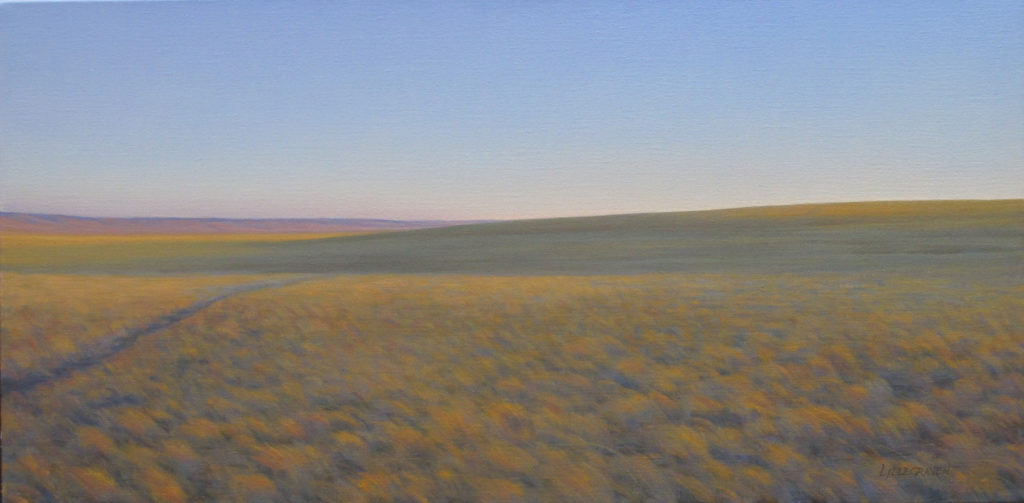
I like to go out on a day when the sky looks promising and drive my favorite county roads. I may have an idea what I’m looking for, but it’s important to always be open to surprises. What I hope to find is an image that offers a sense of great space and quiet harmony. The right pattern of light and shadow may last only a moment, but it’s so important to be truly present in that moment, to fix that inspiration into one’s memory. I’ll take a lot of photos, and often I’ll return to the spot to better understand the shape of the landscape. When the painting is on the easel in the studio, ideally it will all come together; the smell of the wind, the crunch of the soil under my boots, and the sense of being in a vast open space.

Developing those clear, endless skies is harder than you might think. There are almost always three or more layers of paint. The first is thin, slapped on quickly just to cover the white canvas. The second layer is when I put down the colors as I think they should be, and blend them carefully. It always seems necessary to use a third layer to get the colors just where I want them. Here at an elevation of 7,200 feet, the clouds don’t get lost in haze, and you can see the great variety of color in the sky. I’m always looking at the sky when I’m out, asking ‘what color is that, and how can I express it with paint?’ Oil paint allows you to put down the color you think you want, then keep working with it until it looks right.

“Moonrise on a Frozen Lake” is a simple painting containing multiple reflections on our experience of time. I knew I wanted to paint the full moon rising over water, and taking advantage of 21st Century technology, I went to www.timeanddate.com to find the exact time and direction of moonrise. The evening had to be clear and still, with moonrise right around the time of sunset. One of the small Laramie Plains lakes, Gelatt Lake, fit all the criteria, and I bundled up for the short drive out there.
The rest was pure luck. A cold snap had frozen the whole surface, which was still smooth, though as the temperature dropped the ice made unearthly sounds as it cracked and shifted. The last of the sun’s rays colored the distant mountains, though the lake was already in shadow. The rising of the moon, the setting of the sun, the freezing of a lake are all part of a timeless cycle, repeating through millennia. My choice to include the distant ice fishermen, packing up to go home at the end of the day, wasn’t only meant to provide scale to the landscape, and evidence of a solid surface. The fishermen speak of a fleeting human presence in the landscape. The moon will continue to rise and grow brighter, the mountains will go dark, and all will be quiet, save for the ice.
Atmospheric perspective is a lot harder where there isn’t much atmosphere, and what there is doesn’t hold much moisture to soften the colors. A sense of distance must be achieved by other means, especially when there aren’t humans or buildings in the scene. There are always other visual cues that the brain uses to assess distance, but we’re not usually conscious of them. It’s my job as an artist to figure out what those cues are, and how to take advantage of them without burdening the painting with too much detail.
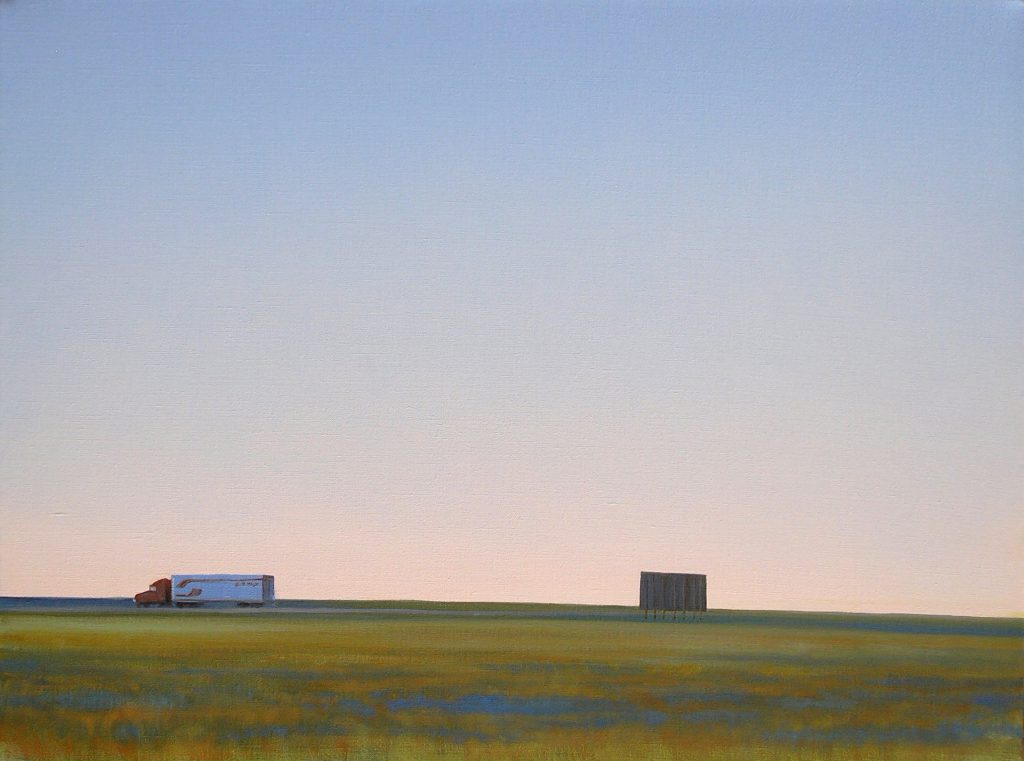
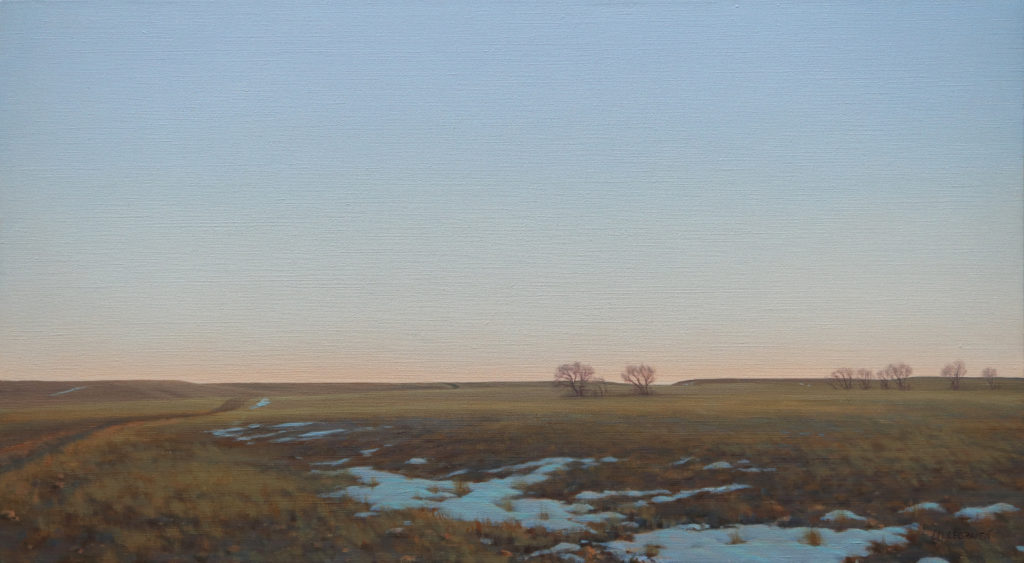
Mandel Lane runs straight across the Little Laramie Valley, and I’ve painted the surroundings, and often the unpaved road itself, many times. It’s named after Phil Mandel, whose log house still stands, and who ran a stage station on the Overland Trail in the 19th Century.

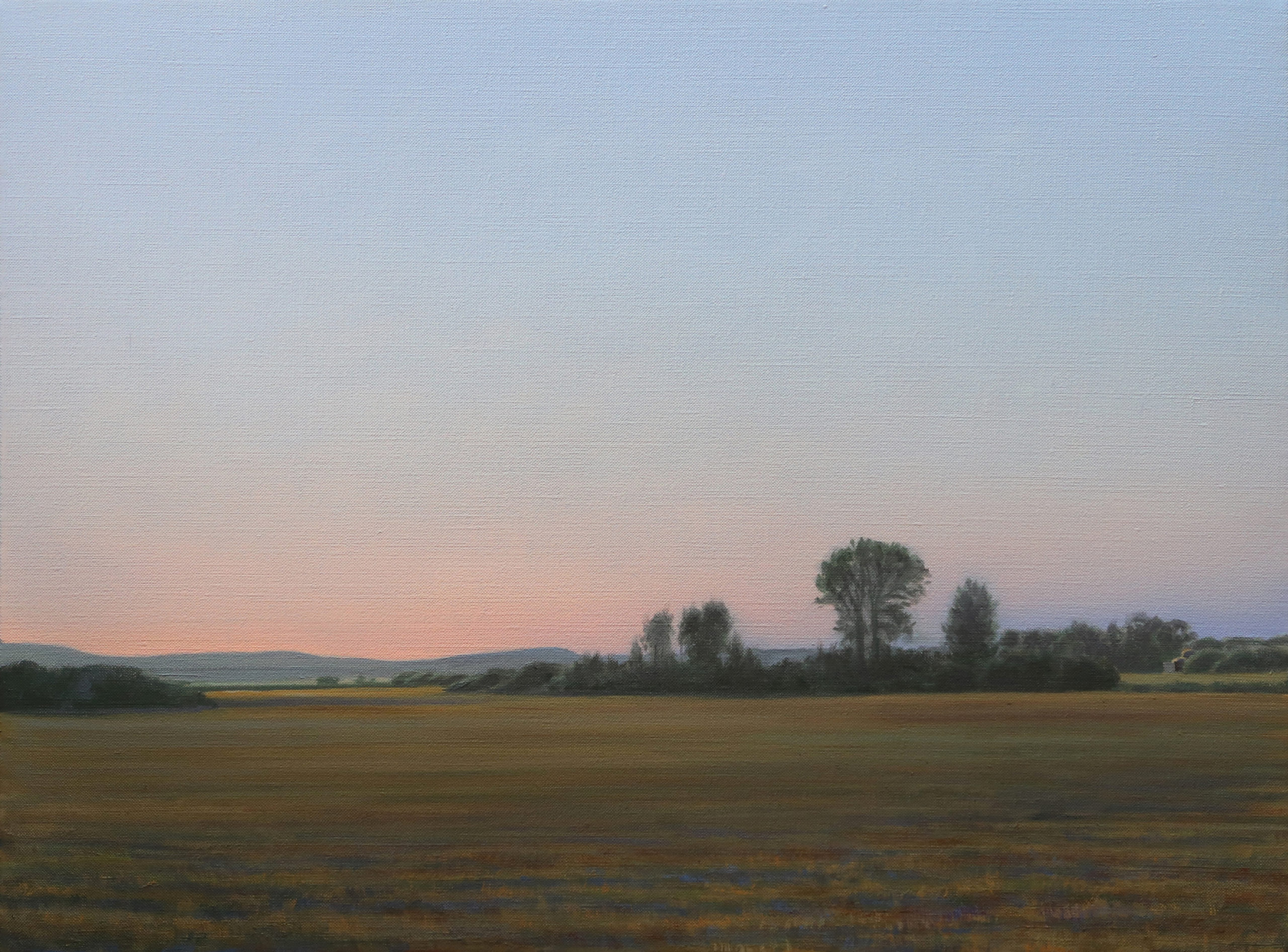
McGill Lane, like many rural roads in the area, bears the name of a family that still lives and ranches there. The roads, rivers, hills and valleys are all familiar to me by now, but the weather and changes of season mean that I will never run out of variety for paintings.
Years ago, I overheard someone who was looking at one of my paintings (which had just won a big award) asking his companion, “Why would anyone paint that?” Not everyone is going to appreciate my work, but I like to think that those who do, share my reverence for the great open spaces of the West.
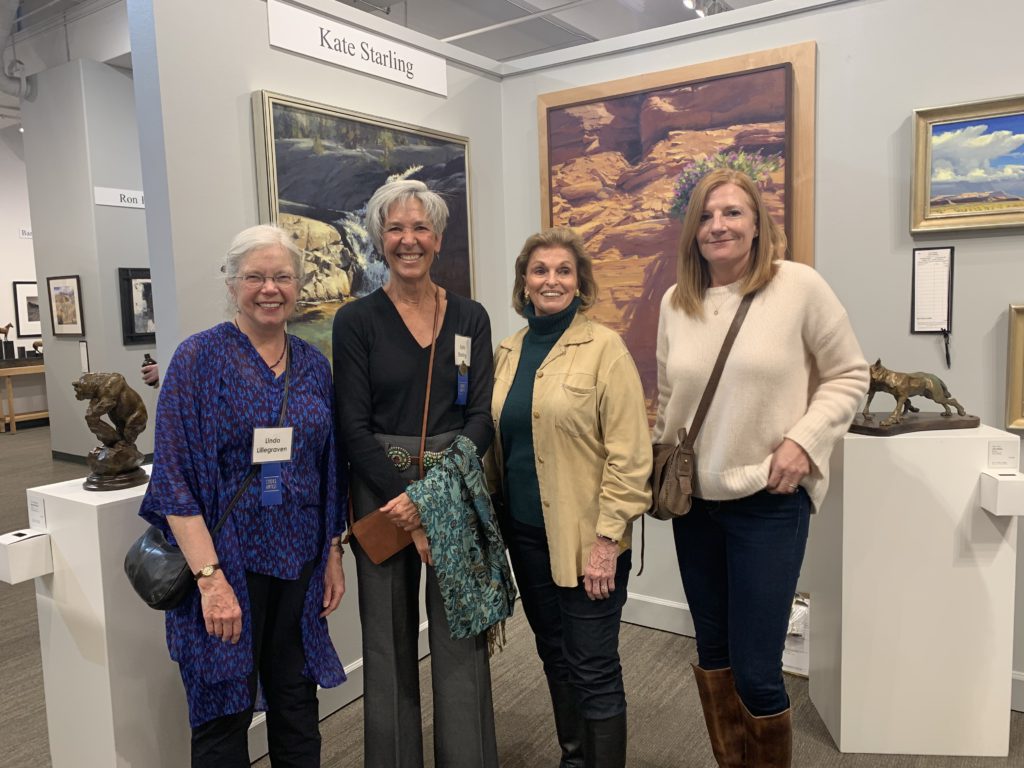
Putting a landscape on canvas is comparable to playing a Beethoven symphony on a toy piano. Nature has so much more range and depth of light and dark and color than we can ever fully achieve with paint. But we keep trying.